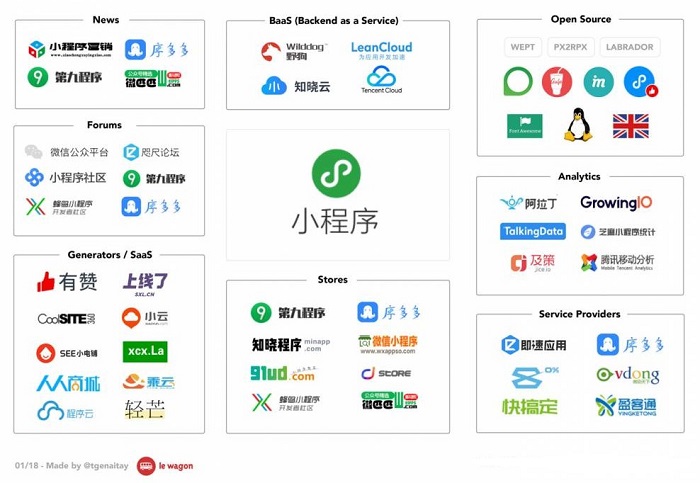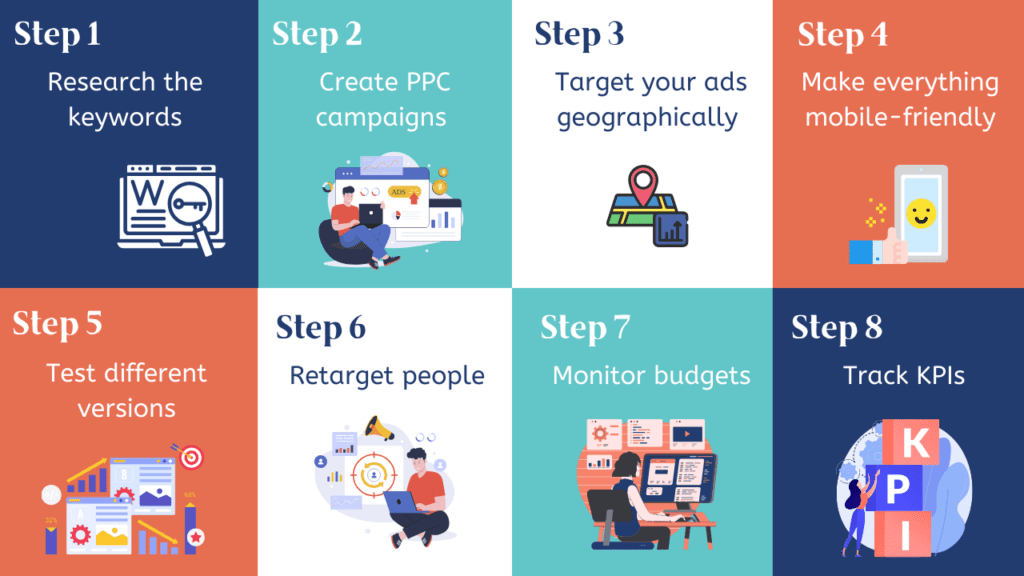
Mastering Digital Marketing in China: An Essential Guide to Successfully Launch Your Tech Business in the World's Largest Market in 2023
18 August 2023 | Lorrie J & Shy L| 8 min read
China is obviously a huge opportunity for global tech firms like yours to tap into. But entering this market and connecting with Chinese consumers can seem super overwhelming. The landscape is so different from the West! But do not stress – we have your back.
In this comprehensive but easy-to-digest guide, we will walk you through everything you need to know to craft a smart, tailored digital marketing strategy for China. We will chat about the local tech consumer psyche, building your brand locally, mastering Social Media, working with influencers (KOLs), optimising for Baidu, and tons more tips.
- China’s Digital Marketing Landscape at a Glance
- Major SaaS Companies that have Entered the China Market
- Why Companies need to have a right PR Strategy
- Deeply Understanding the Chinese Tech Consumer
- Market Research and Localisation
- Building a Localised Website/App and SEO
- Rocking Social Media in China
- Embracing Key Opinion Leaders (KOLs)
- The Power of Video Marketing
- Getting on the Fast Track with SEM and PPC
- Do Not Forget Customer Service and Trust-Building
- Conclusion
With the right prep and a strategic approach, you can nail this and watch your business take off in China. Sound good? Okay, let’s dive in!
China’s Digital Marketing Landscape at a Glance
China’s digital scene is different from what you may be used to. Here is a quick lowdown: The internet is huge in China, with over 900 million users, and most folks connect via smartphones. Keep in mind that Western sites are blocked by the “Great Firewall,” so you must focus on local stars like Baidu, WeChat, Weibo, and Douyin. Optimising for Baidu search and mobile is key, and you must engage audiences on the top social platforms. Also, make paying seamless with Alipay and WeChat Pay. One more thing – take data privacy seriously to build trust! We will explore all this in more detail so you can totally rock digital marketing in China.
Major SaaS Companies that have Entered the China Market
Take Adobe and SAP as examples:
Adobe entered China in the late 1990s and opened its Beijing office in 2006. It has around 2,000 employees in China. Fast forward to 2021, Adobe announced a partnership with Chinese tech giant Huawei to provide cloud services for Adobe’s China customers since it will help Adobe expand cloud offerings in China.
Adobe has invested in localising products and marketing for China. For example, it tailored its Creative Cloud suite for China by adding support for Chinese fonts, input methods, and design assets. This makes the tools more intuitive for local creators.
Features have been added to publish content directly to leading Chinese social platforms like WeChat and Sina Weibo. Moreover, Adobe XD features quick access to China-specific UI templates, web fonts, and design assets.
From a marketing perspective,
- Adobe runs localised marketing campaigns on platforms like Weibo, WeChat, and Youku to engage Chinese users and creators.
- It partners with KOLs, and influencers focused on design, photography, and video editing to promote products.
- Adobe hosts annual CreateNow conferences in China to showcase design trends, tools and inspire creators.
- Adobe works with schools and universities in China to get students access to Creative Cloud.
So, in summary, Adobe has made significant efforts to understand Chinese user behaviours and expectations to tailor products and marketing accordingly.
Next up SAP,
SAP entered China in the mid-1990s and now has around 14,000 employees in the country spread across R&D, services, sales, etc.
The products that they tailor to Chinese customers:
- SAP has customised and translated its enterprise software suites like S/4HANA, C/4HANA, Ariba, Concur, etc., into simplified Chinese.
- The products have been integrated with local payment systems like WeChat Pay and Alipay.
- Chinese regulatory requirements around data privacy, security, and compliance have been built into the products.
- SAP’s cloud offerings in China are delivered via partnerships with local providers like Alibaba Cloud and Tencent Cloud.
- Solutions have been tailored for China’s consumer products, manufacturing, automotive and public services sectors.
On the other side of marketing,
- SAP hosts an annual SAPPHIRE NOW event in China to highlight innovation and customer success.
- Educational initiatives include the SAP UCC program with over 100 universities in China to develop tech talent.
- Strategic partnerships with Chinese firms like Alibaba, Tencent, and Lenovo amplify SAP’s brand presence.
- Executives participate in high-profile conferences like the World Internet Conference to demonstrate thought leadership.
- SAP works with influencers and discussion forums focused on enterprise software and technology.
- China-specific customer testimonials, case studies, and success stories are used extensively in marketing.
You can see that both companies have invested substantially in China for decades, formed local partnerships, and localised products and marketing in their strategies.
Why Companies need to have a right PR Strategy
Let’s face it – expanding into a new market is downright hard work! Everything is different – the culture, the regulations, customer expectations. You must start building name recognition from scratch. And you can bet people will be skeptical of an unknown foreign brand barging into their turf.
That is why smart companies invest in public relations BEFORE tackling a new market. Getting press coverage through ads or news articles introduces you in a positive way. It helps shape perceptions, so you seem trustworthy and likable off the bat.
Good PR makes connecting with future customers and partners way easier. It can also help you handle complicated legal stuff and hiring challenges. With strategic PR, you will enter a new market looking credible and confident, not risky, and random. Think of PR as rolling out the red carpet, so your brand entrance goes smooth as silk. It lays the groundwork for the tough but rewarding journey ahead. Sometimes you need to plan your PR strategy well before your market entry. Then choose a good time to enter with a higher chance of success.
Deeply Understanding the Chinese Tech Consumer
Step one is to get inside the head of your potential Chinese customers. You need to align your offerings and messaging to appeal to them emotionally.
For starters, Chinese consumers love luxury tech products that give them status and prestige. Cutting-edge innovation and sleek design are huge selling points.
Brands also do well when they tap into cultural values like family, harmony, and group belonging. Think about how you can reflect that in your marketing. Oh, and they dig all the fun gamification and social elements too!
If the volume is what you are looking for, build products and campaigns for the fast-growing middle class too.
When promoting to Chinese consumers, focus on tangible benefits. Celebrity endorsements also appeal big time.
And remember – Chinese expect seamless digital experiences across channels. Build that omnichannel magic!
Market Research and Localisation

Conducting thorough market research and effective localisation is pivotal to crafting a successful digital marketing strategy for the Chinese market.
First, clearly define who your audience is and what they want. Do people in different Chinese cities have different needs? Research their pain points so you can help them out.
Scope out your competitors, too – what are they up to in China? See what you can learn from them and how to set yourself apart.
The big idea here is to show China you truly understand them. Learn about the culture and avoid mistakes. Tweak your offerings to match local wants and needs. Test things out small-scale first to see what resonates based on feedback. Then you can go big!
The key is diving deep into the diversity of China to connect authentically. Take the time to listen, learn and refine your approach. Do that, and you will be ready to build an awesome brand that people love!
Building a Localised Website/App and SEO
Okay, let’s dive into some tactics! First, you will need a slick Chinese website localised for the audience. Get that translated into simplified Chinese with local design principles. Work with native speakers to capture proper tone and messaging. You could also incorporate idioms, phrases, and concepts that resonate locally.
Make sure the design fits Chinese tastes – they dig different layouts and navigation than Western sites. Study leading Chinese apps and websites to analyse UX preferences like layouts, navigation, and flows.
Prioritise mobile-first design suited to behaviour on smartphones and tablets since everyone in China is on their phones. Also, ensure compatibility with Chinese keyboards and input methods.
Use culturally relevant, chin-approved images, illustrations, and colours, to make it more appealing to the locals. Avoid any representations that government regulations have banned.
And, of course, host on Chinese servers to optimise site speed since Chinese users expect sites to load incredibly fast. Even a few extra seconds can lead to frustration and the site’s abandonment. Moreover, getting a .cn domain name will look more trustworthy and show your commitment to China.
For SEO, it is all about Baidu in China. Optimise your content, keywords, and technical elements for Baidu specifically. Use keywords in Chinese for maximum impact.
Crafting high-quality, locally-relevant content is important for organic Baidu rankings and authority. Make sure your website is mobile-friendly too!
Use Baidu tools like Wenqu for content ideas. This is key for owning SEO here.
Rocking Social Media in China
The social media scene in China is thriving, with local superstar platforms like WeChat, Weibo, and Douyin. Let’s break down how to totally crush it on these!
WeChat is an absolute must – over 1 billion people use it monthly! It is like the Swiss army knife of apps. Here is how to master it:

- Create an Official Account to chat directly with your followers.
- Regularly share valuable and engaging content through WeChat articles and posts, such as industry insights, product updates, and promotions.
- Make mini apps for bonus features like shopping, games, and more!
- Join relevant WeChat groups and engage in discussions to expand your network and reach potential customers.
Next up is Weibo, China’s microblogging hub, a la Twitter. Here are some Weibo winning strategies:
- Set up your official Weibo account to share bite-sized updates and engage with followers.
- Use trending hashtags to get on people’s radar and participate in conversations relevant to your industry.
- Partner with Key Opinion Leaders (KOLs) on Weibo to reach a broader audience and gain credibility.
And do not forget about the short video app Douyin, aka TikTok! Douyin Marketing 101:
- Make fun and engaging short videos showing off your products. Let your creativity explode!
- Jump on viral challenges and hashtags to increase brand visibility.
- Collab with big Douyin creators to expand your reach and connect with your target audience.
For gaming and niche audiences, dive into QQ and Qzone. You can:
- Build brand profiles and engage with users through content and interactions.
- Partner with gaming companies to connect with players to reach a gaming-focused audience.
Leveraging the power of social media in China is a game-changer for your tech company’s digital marketing efforts. You can create a strong brand presence and cultivate a loyal customer base by engaging with users on WeChat, Weibo, Douyin, QQ, and Qzone.
Embracing Key Opinion Leaders (KOLs)

Time for the super fun topic of influencer marketing!
Working with popular Key Opinion Leaders (KOLs) on WeChat, Weibo, Douyin, and other platforms can seriously take your marketing game to the next level in China.
These influencers have huge, devoted followings in your industry. Collaborating with them gives you a megaphone to reach tons of potential new customers with some major credibility.
It is a total win-win – they get sponsored content and promotions, and you get access to their audience and endorsement.
But you must choose carefully – pick influencers who genuinely fit your brand.
When done right, influencer marketing lets you tap into thriving communities and skyrocket awareness. Time to make some influencer BFFs!
Okay, now let’s dig deeper into nailing your KOL strategy…
Step 1 – Find influencers who genuinely care about your industry. Look for engaging content and an audience that matches yours.
Step 2 – Encourage honest reviews and input. Chinese audiences value authenticity big time. Authenticity builds trust with the audience.
Step 3 – Collaborate on videos, posts, and live streams to showcase your brand. User-generated content is powerful! The content you choose could be product reviews, unboxing videos, tutorials, or engaging sponsored posts.
Step 4 – Go multi-channel with influencers active on WeChat, Douyin, and Xiaohongshu. Expand that reach!
Step 5 – Build long-term partnerships for a bigger impact over time. It helps reinforce brand association and fosters loyalty among the KOL’s audience. In short, consistency is the key.
Step 6 – The campaigns will only be useful if you track how you perform, so track engagement, sales, and more to see what works and what doesn’t. Moreover, use this data to refine your performance and determine the most effective KOLs for future partnerships.
Step 7 – Make sure your influencers properly disclose sponsorships as required. Transparency builds trust.
See, influencer marketing done right is a win-win! You get endorsement and awareness, while your KOL partners get sponsorship opportunities and rewards.
But it all comes down to finding influencers who align with your brand’s personality. Do that, and you can build awesome influencer relationships!
The Power of Video Marketing

Videos are a must for connecting with Chinese audiences! Let’s explore some winning video marketing strategies:
For TikTok and Kuaishou, make fun short videos showing off your products using viral trends. Get creative and entertain people! Use popular trends and challenges to increase your video’s visibility and reach.
Have in-depth demos, tutorials, or behind-the-scenes glimpses? Post those longer videos on Tencent Video to share your expertise since people who are on Tencent Video are more attracted to more in-depth content.
Collaborate with top influencers and creators to tap into their follower base and credibility. Epic cross-promotion opportunity!
Go live or host Q&As to engage people in real-time. Build those relationships! Give them a sense of community and connection.
Encourage user-generated videos featuring your brand. This gives you authentic social proof!
Craft compelling stories that pull the heartstrings. Emotional connections = brand loyalty. It could leave a lasting impression, increasing brand recall and loyalty.
Optimise absolutely everything for mobile viewing. Most people watch on phones in China. Keep videos short, visually appealing, and with clear messaging to quickly capture the audience’s attention.
Analyse metrics across platforms to see what video styles, lengths, and topics perform best. Then make more of that!
See, there are so many opportunities to share your brand story through video. And platforms like Douyin make it easier than ever to reach a huge audience. Time to start shooting!
Getting on the Fast Track with SEM and PPC

Since Baidu dominates search, the way you get found online easily is to master Baidu PPC and do search advertising.
Step 1 – Research the keywords people are searching for related to your biz. Optimise your site and ads around those.
- Brainstorm a big list of search terms your audience might use to find your products. Get specific with long-tail keywords.
- Use handy tools like Baidu Index to check monthly search volumes and keyword trends. Focus on decent traffic.
- Find keyword gaps your competitors rank for, but do not target them yet. Prime optimisation opportunities.
- Prioritise keywords aligned with your biz goals, like website conversions. Not only vanity metrics.
- Organise keywords into ad groups around topics, product lines, etc. Keeps things focused.
- Refresh your research frequently to adapt to new trends. The landscape evolves quickly.
- Sprinkle match-type keywords across your website copy. Boosts your SEO too.
Step 2 – Create PPC campaigns on Baidu to get your ads in front of motivated searchers. Text, images, video – try it all!
- Use your high-potential keywords to create relevant text ads of up to 25 Chinese characters. Catchy, localised headlines are essential!
- Try display ads with images/videos to showcase your brand visually. Build a diverse ad portfolio.
- Target your ads to appear alongside searches and on partner sites with related content. Increase relevancy.
- Make your landing pages seamless extensions of your ads. Smooth user experience is how you let customers stay on your website.
- Set a daily budget and bid strategically on your chosen keywords. Monitor costs closely.
- Utilise call tracking numbers to see which keywords drive calls. Tie campaigns to real ROI.
- Do not forget location targeting if your business is local! Geo-targeting for the win.
- Based on performance data, keep iterating on creative, keywords, landing pages, etc. Optimisation never stops!
Step 3 – Target your ads geographically to reach folks in your ideal locations. It gets you more bang for your buck!
- Research where your target customers are concentrated geographically.
- Use Baidu’s platform to target ads by province, city, district, or even latitude/longitude. #precisionmarketing
- Compare the performance of geo-targeted ads vs broader targeting. The data does not lie.
- Develop locally relevant ad copy and landing pages for different regions. Resonate with local flavours.
- Adjust bids and budgets by location based on potential ROI. Maximise your ad spending impact.
- Use location exclusions to avoid showing ads you do not operate or want to target. Saves budget and allocates where you need.
- Consider pairing geo-targeting with dayparting – adjust based on the time of day.
Step 4 – As we mentioned on top many times, make everything mobile-friendly. It is vital for the on-the-go Chinese consumer.
Step 5 – Test different versions of your ads and landing pages to see what converts best.
- Test one element at a time – like headline, image, or call-to-action. Do not overload.
- Use tools like Baidu Tongii and monitor split tests.
- Make your variants distinctly different but relevant to your brand. Get creative as much as you can.
- Test on smaller traffic campaigns before scaling up, which would have a smaller impact and risk for the business.
- Run tests for 1-2 weeks at least to gather sufficient data. Have patience and sit tight.
- Look at click-through rate, conversions, and cost per conversion to judge winners. The stats will tell the story.
- Take what you learn and apply it to future ads and campaigns. Continual optimisation and keep learning from the stats.
Step 6 – Retarget people who have already visited you to gently keep your brand on their minds.
- Create custom audiences in Baidu based on site visitors, engagement, interests, etc. It is super targeted for specific groups.
- Show them ads with special offers or reminders as they browse elsewhere online. Grab their attention again.
- Focus on driving conversions by promoting discounts, webinars, and limited-time perks. Urgency works.
- Use across search, social, and shopping platforms for maximum impact.
Step 7 – Monitor budgets closely and adjust based on performance and ROI. The metrics will guide you.
Step 8 – Track KPIs like CTR, conversion rate, and cost-per-click. Continually optimise and improve.
- Check metrics weekly or even daily to stay on top of performance.
- Track the click-through-rate to improve ad relevance and quality score.
- Watch conversion rates closely to improve landing pages and targeting.
- Monitor cost-per-conversion to judge campaign profitability and ROI.
- Segment data by ad group, ad creative, keyword, location, etc. Isolate what works.
- Set up automated reporting to get insights delivered straight to your inbox.
- Compare campaign performance period-over-period. Spot positive and negative trends.
- Test new approaches on small batches of traffic to gauge impact before scaling up.
If you want to know more detail about how to master Baidu PPC, here is another article you could take a look – Mastering Baidu PPC: Advanced Strategies and Tools to Succeed in China’s Lucrative Market (Part 2)
Do Not Forget Customer Service and Trust-Building
In China, how you treat customers makes or breaks your success. Let’s dive deeper into how to wow customers and earn trust in China
Respond to questions ASAP across email, chat, and social media. Speed shows you care. If you want to take a further step, hire a dedicated service team ready to tackle inquiries round the clock and be available 24/7.
- Use helpdesk software to assign, track and escalate issues efficiently.
- Thank customers for reaching out, and apologise for any inconvenience. A little goodwill goes a long way.
- Follow up with dissatisfied customers to confirm issues are fully resolved. It could turn them into loyal fans. Make sure to follow up diligently to confirm any issues get fully fixed. A little effort goes a long way.
- Analyse common questions and complaints to improve products and content. Turn feedback into progress.
Have native Chinese support staff. Make customers feel understood and comfortable.
Encourage reviews/testimonials and showcase them. Word-of-mouth is marketing gold! Encouraging rave reviews builds vital social proof.
- Add review forms and prompts across your site and in emails. Make it easy to share feedback!
- Offer perks like discounts for posting reviews.
- Respond publicly to reviews. Thank happy customers and address constructive criticism.
- Share great reviews on social media. User-generated content performs wonderfully.
- Use excerpts in ads and on landing pages. Highlight your shining moments.
Build authenticity. Proactively address privacy and security concerns, and display trust badges on your site.
Be transparent in your marketing. Avoid exaggerated claims that erode trust.
- If something does not work perfectly yet, say so. Under promise, overdeliver.
- Correct any false assumptions people make about your product. Do not take advantage.
- Admit mistakes quickly and sincerely. Handling missteps well builds integrity.
- Reply to feedback explaining your reasoning, even if disagreeing. Dialogue builds trust.
- Make it easy for people to contact you with concerns. Welcome accountability.
Provide stellar after-sales support – returns, warranties, etc. Show your commitment.
Monitor reviews and complaints closely. Resolve issues professionally and promptly.
Conclusion
Let’s recap the keys to success:
First, do your homework. Study the landscape, local competition, and consumer needs. Adapt your product and branding for China. This lays the foundation.
Next, get social. Engage audiences on WeChat, Weibo, and Douyin. Collaborate with influencers for credibility. And create viral video content. This is where the magic happens.
Then drive conversions by selling on Chinese ecommerce sites, running targeted ads, and providing killer customer service. Nail the user journey from discovery to delighted customers.
Stay flexible and keep learning too. China always evolves quickly. Monitor trends and tweak your approach to stay ahead.
It is a journey, but one well worth taking. Lean on what we covered today to avoid rookie mistakes. Feel free to contact us anytime for help or advice in entering the new market. 🤝